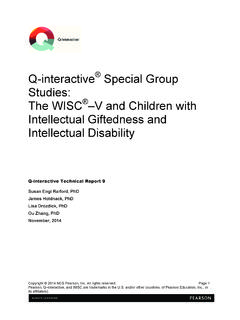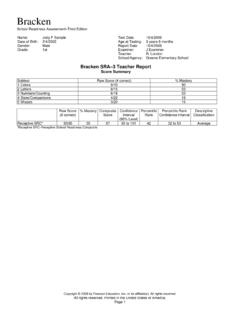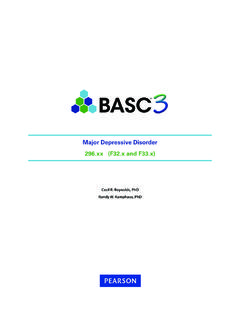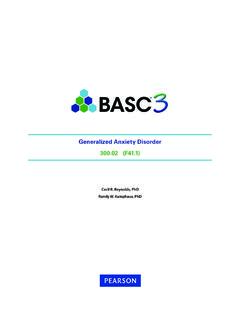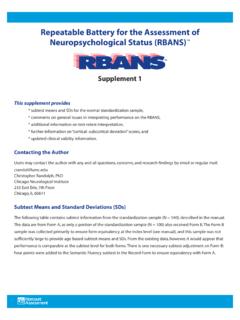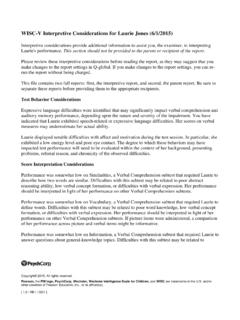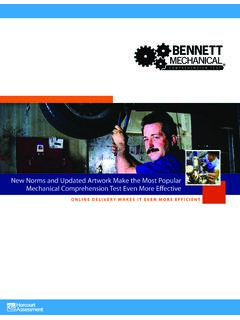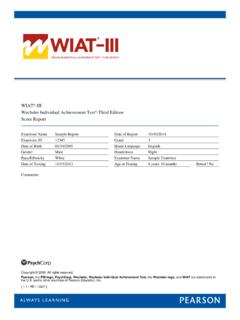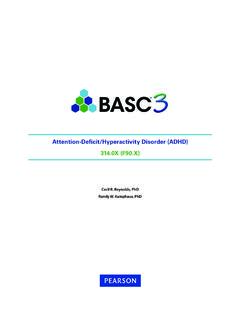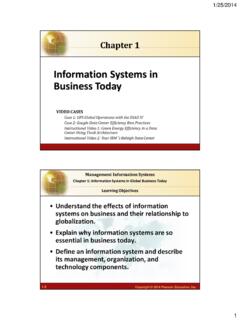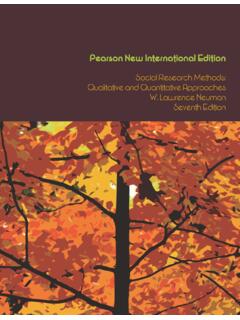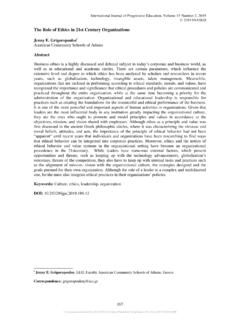Transcription of Persistent Depressive Disorder ... - Pearson Assessments
1 Persistent Depressive Disorder ( dysthymia ). ( ). Cecil R. Reynolds, PhD. Randy W. Kamphaus, PhD. DSM-5 Diagnostic Criteria Persistent Depressive Disorder ( dysthymia ) ( ). This Disorder represents a consolidation of DSM-IV-defined chronic major Depressive Disorder and dysthymic Disorder . A. Depressed mood for most of the day, for more days than not, as indicated by either subjective account or observation by others, for at least 2 years. Note: In children and adolescents, mood can be irritable and duration must be at least 1 year. B. Presence, while depressed, of two (or more) of the following: 1. Poor appetite or overeating. 2. Insomnia or hypersomnia. 3. Low energy or fatigue. 4. Low self-esteem. 5. Poor concentration or difficulty making decisions. 6. Feelings of hopelessness. C. During the 2-year period (1 year for children or adolescents) of the disturbance, the individual has never been without the symptoms in Criteria A and B for more than 2 months at a time.
2 D. Criteria for a major Depressive Disorder may be continuously present for 2 years. E. There has never been a manic episode or a hypomanic episode, and criteria have never been met for cyclothymic Disorder . F. The disturbance is not better explained by a Persistent schizoaffective Disorder , schizophrenia, delusional Disorder , or other specified or unspecified schizophrenia spectrum and other psychotic Disorder . G. The symptoms are not attributable to the physiological effects of a substance ( , a drug of abuse, a medication) or another medical condition ( , hypothyroidism). H. The symptoms cause clinically significant distress or impairment in social, occupational, or other important areas of functioning. Note: Because the criteria for a major Depressive episode include four symptoms that are absent from the symptom list for Persistent Depressive Disorder ( dysthymia ), a very limited number of individuals will have Depressive symptoms that have persisted longer than 2 years but will not meet criteria for Persistent Depressive Disorder .
3 If full criteria for a major Depressive episode have been met at some point during the current episode of illness, they should be given a diagnosis of major Depressive Disorder . Otherwise, a diagnosis of other specified Depressive Disorder or unspecified Depressive Disorder is warranted. 1 . Reprinted with permission from the Diagnostic and Statistical Manual of Mental Disorders, Fifth Edition (Copyright 2013). American Psychiatric Association. All Rights Reserved. Specify if: With anxious distress With mixed features With melancholic features With atypical features With mood-congruent psychotic features With mood-incongruent psychotic features With peripartum onset Specify if: In partial remission In full remission Specify if: Early onset: If onset is before age 21 years. Late onset: If onset is at age 21 years or older. Specify if (for most recent 2 years of Persistent Depressive Disorder ): With pure dysthymic syndrome: Full criteria for a major Depressive episode have not been met in at least the preceding 2 years.
4 With Persistent major Depressive episode: Full criteria for a major Depressive episode have been met throughout the preceding 2-year period. With intermittent major Depressive episodes, with current episode: Full criteria for a major Depressive episode are currently met, but there have been periods of at least 8 weeks in at least the preceding 2 years with symptoms below the threshold for a full major Depressive episode. With intermittent major Depressive episodes, without current episode: Full criteria for a major Depressive episode are not currently met, but there has been one or more major Depressive episodes in at least the preceding 2 years. Specify current severity: Mild Moderate Severe 2 . Reprinted with permission from the Diagnostic and Statistical Manual of Mental Disorders, Fifth Edition (Copyright 2013). American Psychiatric Association. All Rights Reserved.
